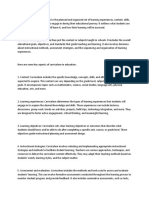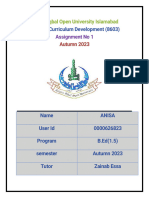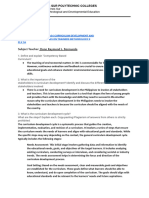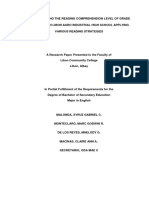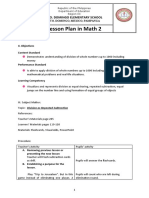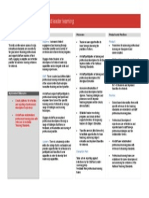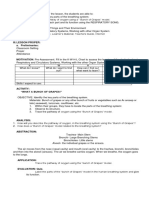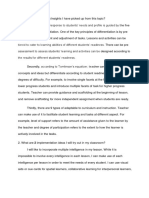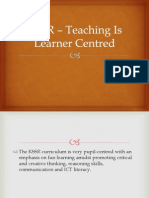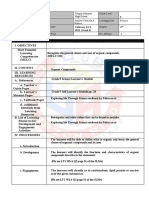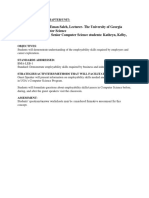0% found this document useful (0 votes)
10 views7 pagesModel
The document outlines a comprehensive model for developing a Bachelor of Secondary Education major in English curriculum, emphasizing the importance of establishing a clear vision, conducting contextual analyses, and performing needs assessments. It details a cyclical process that includes defining learning objectives, designing the curriculum, implementing it, and continuously evaluating and revising based on stakeholder feedback. This approach ensures the curriculum remains relevant, effective, and responsive to the diverse needs of learners and the community.
Uploaded by
Oda Clamar SecretarioCopyright
© © All Rights Reserved
We take content rights seriously. If you suspect this is your content, claim it here.
Available Formats
Download as DOCX, PDF, TXT or read online on Scribd
0% found this document useful (0 votes)
10 views7 pagesModel
The document outlines a comprehensive model for developing a Bachelor of Secondary Education major in English curriculum, emphasizing the importance of establishing a clear vision, conducting contextual analyses, and performing needs assessments. It details a cyclical process that includes defining learning objectives, designing the curriculum, implementing it, and continuously evaluating and revising based on stakeholder feedback. This approach ensures the curriculum remains relevant, effective, and responsive to the diverse needs of learners and the community.
Uploaded by
Oda Clamar SecretarioCopyright
© © All Rights Reserved
We take content rights seriously. If you suspect this is your content, claim it here.
Available Formats
Download as DOCX, PDF, TXT or read online on Scribd
/ 7







